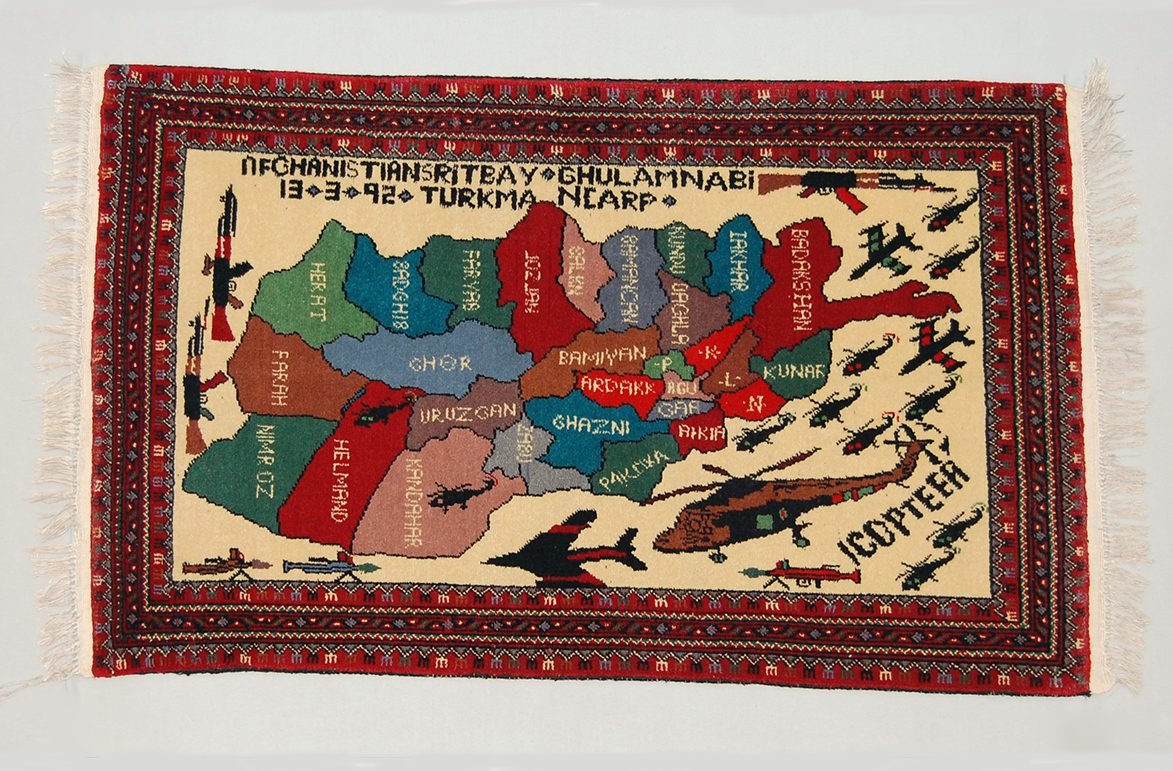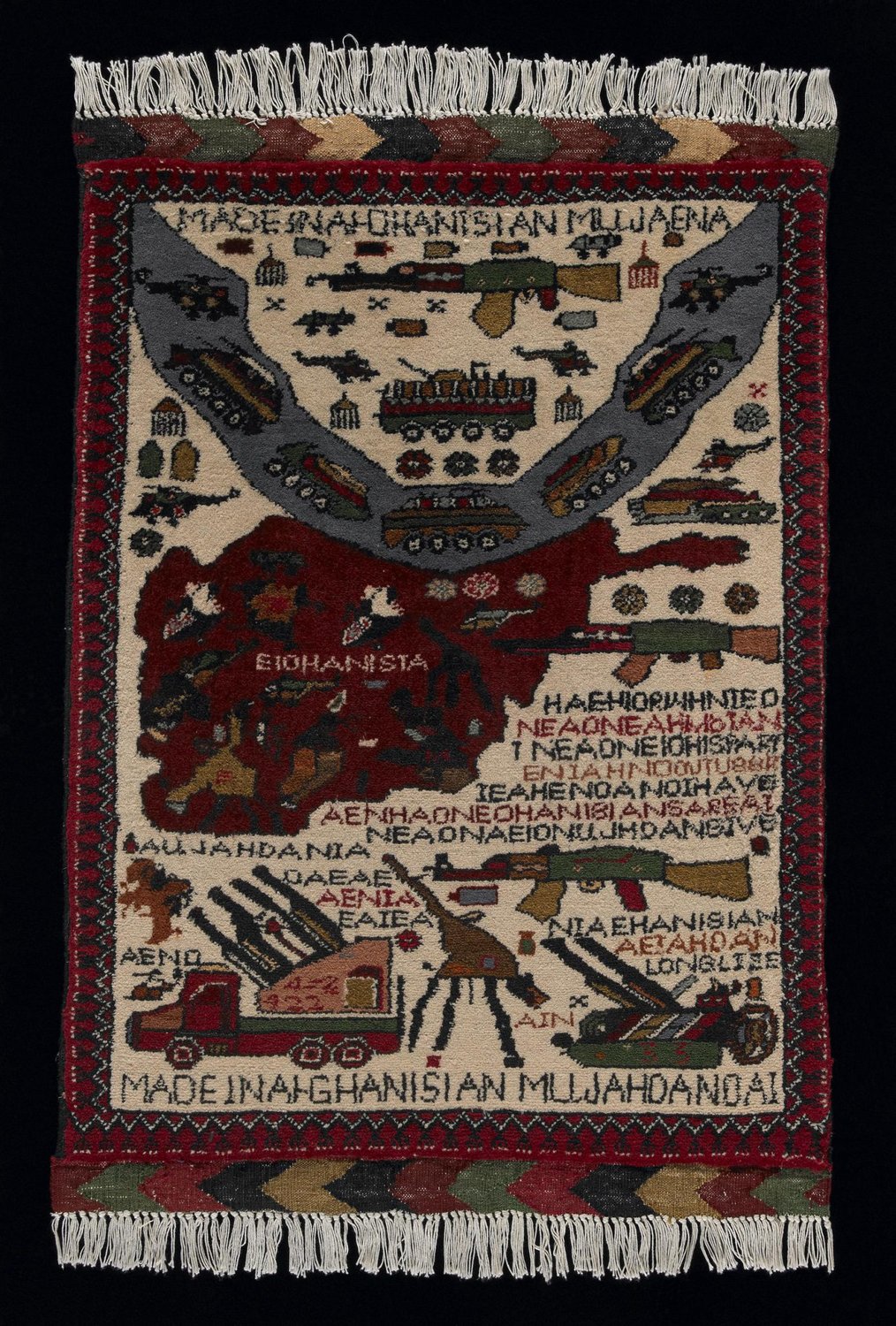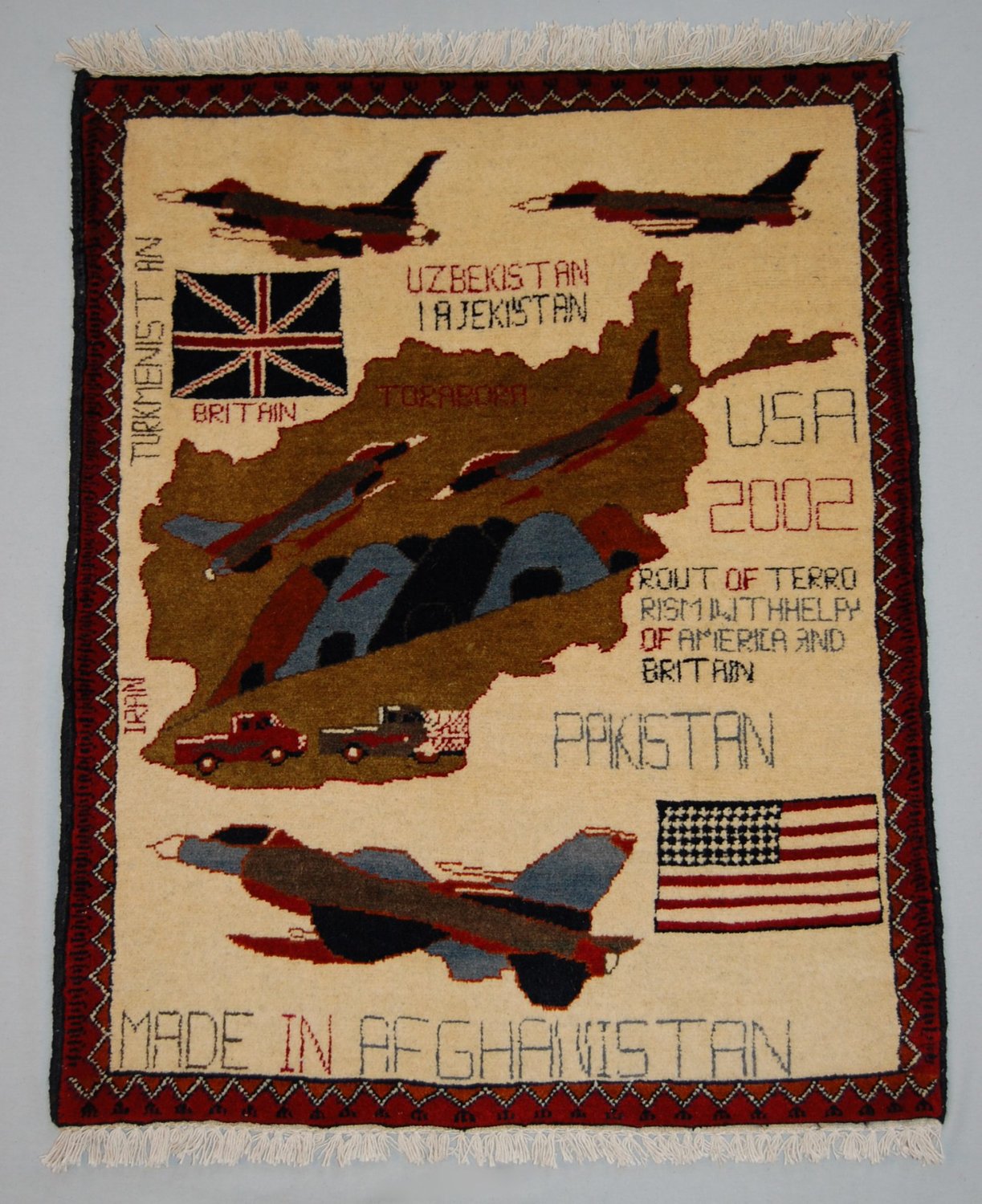The War Rugs of Afghanistan: How Carpet Weavers Depict a History of Violence

This woven Afghan war rug with a beige background, a deep red border, and white tassels includes a large, colorful map of Afghanistan with the names of the provinces indicated in English. Photo courtesy of the Trustees of the British Museum/Creative Commons.
The women of Afghanistan’s nomadic tribes have woven rugs by hand for thousands of years. But when the Soviet Union invaded in 1979, these carpet weavers incorporated symbols from the nine-year armed conflict into their rugs. These rugs — or war rugs as they are sometimes called — have evolved from traditional designs featuring vases and flowers to depict violent wartime themes, and their relevance echoes to this day.
From Kalashnikov rifles to modern drones — these war rugs are one form of freedom of expression that uniquely represent Afghanistan’s troubled history.
The war rug movement was inspired by the work of Italian conceptual artist Alighiero Boetti. In 1971, Boetti commissioned Afghan weavers to produce a series of map textiles based on his collection of newspaper illustrations of the 1967 Arab-Israeli Six-Day War.
Between 1979 and 1989, the US-backed Afghan mujahedeen repelled a Russian invasion during the Soviet-Afghan War. During the conflict, Afghanistan’s rug artists employed Boetti’s visual language to portray political maps of Afghanistan, as well as images of munitions, soldiers, fighter jets, and the feared Soviet “Hind” helicopter gunships.

“There were some map rugs in the ’80s, for example, that showed Afghanistan beset by war and refugees fleeing to Pakistan,” Kevin Sudeith, a war rug collector, told NPR. “And then in the 1990s, those showed the similar pattern with the map of Afghanistan and the Soviets pouring out of Afghanistan through Uzbekistan.”
Sometimes the artists made war rugs to fund their resistance activities. “The rugs are made by Afghan guerrillas at a camp somewhere in neighboring Pakistan,” the Miami Herald reported in 1991. “The war rugs show Soviet AK-47 rifles, tanks and other military hardware and are sold to finance the guerrilla fighters.”
Following the terrorist attacks on 9/11, war rugs depicted images such as commercial airliners flying into the World Trade Center buildings and a white dove of peace between the US and Afghan flags. When the US invaded Afghanistan in 2001, there were rugs featuring American F-16 fighter jets, Abrams tanks, and maps of Tora Bora where Usama Bin Laden took refuge before escaping into Pakistan.

Beyond the visuals, the story behind these war rugs retains a darker side.
“Although Afghan weavers are traditionally women, Western collectors and dealers only deal with intermediaries, so it’s difficult to verify who actually makes the rugs, and under what circumstances,” The Atlantic reports. “The U.S. Department of Labor, for example, lists those made in Afghanistan and Pakistan among the crafts that may involve child and forced labor.”
During Taliban rule in the 1990s, Afghanistan’s war rug weavers continued their craft despite a national prohibition against art and idolatry. With the Taliban back in charge, the fate of this unique art form is in peril.
Read Next: The Vietnam Combat Artist Program: The American Soldiers Who Documented War With Art

Matt Fratus is a history staff writer for Coffee or Die. He prides himself on uncovering the most fascinating tales of history by sharing them through any means of engaging storytelling. He writes for his micro-blog @LateNightHistory on Instagram, where he shares the story behind the image. He is also the host of the Late Night History podcast. When not writing about history, Matt enjoys volunteering for One More Wave and rooting for Boston sports teams.
BRCC and Bad Moon Print Press team up for an exclusive, limited-edition T-shirt design!
BRCC partners with Team Room Design for an exclusive T-shirt release!
Thirty Seconds Out has partnered with BRCC for an exclusive shirt design invoking the God of Winter.
Lucas O'Hara of Grizzly Forge has teamed up with BRCC for a badass, exclusive Shirt Club T-shirt design featuring his most popular knife and tiomahawk.
Coffee or Die sits down with one of the graphic designers behind Black Rifle Coffee's signature look and vibe.
Biden will award the Medal of Honor to a Vietnam War Army helicopter pilot who risked his life to save a reconnaissance team from almost certain death.
Ever wonder how much Jack Mandaville would f*ck sh*t up if he went back in time? The American Revolution didn't even see him coming.
A nearly 200-year-old West Point time capsule that at first appeared to yield little more than dust contains hidden treasure, the US Military Academy said.












